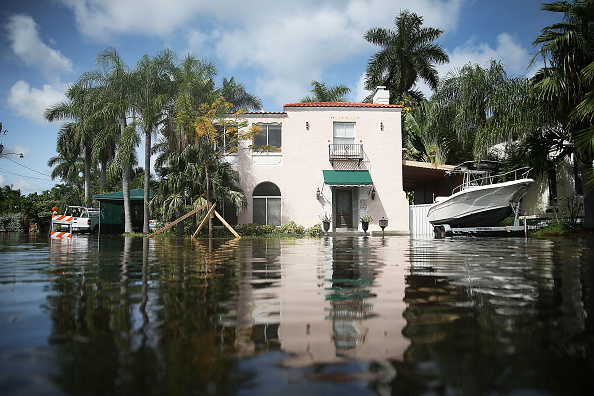Trending
As sea levels rise in Miami Beach, raising homes and buildings may be next

For some property owners in Miami Beach, raising their homes and buildings may be the only solution to dealing with rising seas.
Miami Beach officials say that as the city raises its streets, they expect more homeowners and building owners to look seriously at raising their structures – many of which will be lower than streets and sidewalks on their property line.
“We have to adapt these buildings before the water gets here, because otherwise it will be too expensive to keep them, so we have to adapt them or let go of them and build new,” said Roderick Scott, a consultant to the International Association of Structural Movers.
Scott spoke in Miami Beach Thursday evening at an event hosted by the Miami Design Preservation League. While the classic Art Deco buildings of South Beach are no longer in danger of the wrecking ball, they are in danger from rising seas – along with single-family homes and other buildings.
Insurance rates are rising along with the seas. “Remember we are not adapting to climate change, we are adapting to insurance change, and that is happening quicker than climate change,” said Scott, noting that base flood elevation standards used by FEMA are set to go up to 10 feet next year. FEMA flood elevation standards are used to set insurance rates, and they adversely affect older buildings because as Scott said, “they are the ones that always get damaged.”
Raising buildings dramatically lowers flood insurance rates: raising a home 3 feet above base flood elevation lowers premiums on average from $1,410 per year to $427, he said.
Scott said the Florida legislature is considering legislation that would provide financial incentives at the state level for raising buildings. While many older buildings in Miami Beach have issues like salt intrusion into concrete and mortar, he said a “cursory inspection” of some buildings left him and several other structural moving experts with the impression that the structures can be moved.
One of those movers is Jason Devooght, whose company has raised 3,000 homes in New Jersey and 2,500 homes in New York since superstorm Sandy. He said he expects between 15,000 and 30,000 homes to be raised in the next five years in the United States in response to rising seas and rising insurance rates.
But raising a building is not cheap. Just lifting a single-family home can cost up to $100,000 and raising a small apartment building, especially one that’s 60 or 70 years old, can cost hundreds of thousands of dollars.
“I think what it really comes down to is funding. You have to find a way to get a balance between historical preservation and elevation and you need to find a way to fund it,” Devooght told The Real Deal.
Matis Cohen, who owns more than 30 older buildings in North Beach told TRD that the cost of raising buildings has left many property owners in Miami Beach in a no-win situation. “The takeaway is that the federal government doesn’t give funding for mitigation – they give funding after there is a catastrophe.”
Just as in Louisiana, New York and New Jersey, the biggest incentive to raise buildings will likely be the arrival of a major hurricane. Scott said that while “you don’t want to wish that on anyone, a serious flood event will motivate and stimulate this activity.”




